Dutch politics — a primer for foreigners
This part of QuirksMode explains Dutch politics to foreigners.
I’ve wanted to do this for a long time, even though I estimate that worldwide only
about twelve non-Dutch speakers will be interested in the topic.
The Dutch politics section falls apart into two parts:
- In eleven articles I will treat the political history of the Netherlands from 1848 to
the present day. This page gives a general introduction to those articles.
- On my Political quirks blog I will follow current Dutch politics,
especially as they apply to the elections.
Current affairs
These are the last blog posts:
Key points
Bias
I’m a historian originally, and not a political scientist. That has consequences for
my treatment of the material; although some political science theories have greatly helped
my understanding of Dutch political history, others mainly want to prove an abstruse theoretical point
that has little bearing on the everyday workings of politics — at least, that’s how
it seems to me.
As a historian (though not of modern Dutch politics) I’m required to be as fair as
possible, although that's pretty hard when it comes to the CDA. I vote left,
and that will undoubtedly introduce a bit of bias in my treatment.
Here's my own voting record:
- 1989: De Groenen (Roel van Duijn), a leftist fringe group that didn't make in into parliament.
During my research for this series I found out it was a PPR split-off; something I had no idea
of back then.
- 1994: D66. I supported the Purple idea eagerly.
- 1998-2006: SP. Too much sell-out of public services by a PvdA-led government caused me to
veer sharply to the left.
- 2010: D66. The SP was too conservative for me, especially regarding Europe.
- 2012: SP. Despite being conservative, the SP is the only party I trust to take a stand against big finance.
- 2017 and 2021: GL. D66 is too right-wing for me; SP too anti-European; I was not going to vote PvdA after the Rutte II government. So: GL.
- 2023: PvdA-GL.
Dutch politics are best understood in the context of themselves; although there is some overlap
with Belgian, German and Scandinavian politics, the Dutch political system is unique and has features
not seen anywhere else. (The same goes for all other political systems, by the way.) I doubt there
are universal lessons to be drawn from these pages, but I’ll leave judging that to you.
In general the Dutch consider nine the minimum number of parties necessary to adequately represent
themselves politically. Foreign students of Dutch politics, especially those from the Anglo-Saxon countries,
will have to learn to live with this fact.
Proportional representation
The Dutch elect only their legislative bodies; all executives are nominated by the Crown.
Dutch elections are based on proportional representation. A party that gets 7% of the national vote
gets 7% of the seats in national parliament. It does not matter where these votes were cast;
there are no electoral districts.
Proportional representation allows small parties to be represented in parliament, which is generally
considered a Good Thing. The downside is that no party ever gets a majority by itself; in order to form
a stable government, several parties will have to form a coalition.
Parliament and the three large parties
Dutch parliament has 150 seats; and 76 are necessary for a majority (and hence a viable
government coalition).
A government coalition consists of two of the three formerly-large parties. Until 1994 that was enough;
thereafter the two parties had to invite a third, smaller coalition party to obtain a majority — and
inn 2017 a fourth.
Note to American readers: in European politics, Liberal denotes the moderate right, and not the left.
This site uses Liberal exclusively in this European sense.
If you know something of German politics, compare PvdA to SPD, CDA to CDU, and VVD to FDP.
The three large parties used to be:
- left-wing PvdA (Labour; social-democrat)
- centrist CDA (christian-democrat)
- right-wing VVD (liberal)
The fourth party in this three-party system was D66, which aimed to change Dutch politics and succeeded
in 1994 with the creation of the Purple PvdA+VVD+D66 government.
During the Purple era (1994-2002) the PvdA
moved too far rightward economically, while the VVD moved too far leftward
when it came to immigration. This led fo the creation of whip parties — extreme parties that by their
very existence force mainstream parties to move away from the centre in order to recapture their voters.
The SP on the left and first Pim Fortuyn and then Geert Wilders’s PVV on the right are vying for control of their wing
with the PvdA and VVD. On the whole the VVD has held up rather better under this stress than the PvdA, partly because the CDA
is in trouble as well, and many of its former voters have moved rightward to the VVD.
Government formation
After elections, the largest party takes the initiative in forming a governmental coalition. If that party
fails to reach an agreement after several monts, the initiative passes to the second-largest. This process continues
until a coalition has been formed.
The party leader of the largest party becomes prime minister. His government is known by his name,
followed by a Roman numeral if it’s his second or later government. After the 2006 elections
the Balkenende IV government was formed; i.e. the fourth
government prime minister Balkenende (CDA) presided over.
Small parties
In addition to the three large parties there are tons of smaller ones. Sometimes the large
parties have to select a small party for their coalition, and during this the selection process
the small parties are on their best behaviour.
Thus, before the elections small parties have to be different enough for voters to prefer them over a larger party,
and after the elections they have to be moderate and reasonable enough to present themselves as viable and serious
coalition partners. Some small parties skip the reasonable moderation and concentrate on the differences. They get to
play in parliament, but not in government.
One of the current problems in Dutch politics is that the distinction between small and large parties is sometimes lost.
Historical overview
Although this article series will treat events in chronological order, I’ll jump back and forth
through the post-war era if I need extra examples or illustrations. Therefore you need to know the broad
outline of Dutch political history since 1848.
1848-1888 - Liberals versus conservatives
In 1848 parliamentary rule was instated, and the first forty years were mainly about the struggle
between liberals, who wanted to extend parliamentary power, versus conservatives, who wanted to
defend royal prerogative. This period ended with a victory for the liberals, and the conservatives
dissolved into a secular wing that became nominally liberal, and a religious wing that became
anti-revolutionary.
During this period the catholics first allied with the liberals, then with the conservatives,
and finally with the anti-revolutionaries.
1888-1918 - The Antithesis
From 1888 to 1918 Dutch politics were overshadowed by the so-called Antithesis. In this political
theory all christian parties, both catholic and protestant, were each other’s allies against
the secular liberal parties. The christian and liberal blocks alternated in forming a government,
and fought out a bitter cultural war, the school struggle.
The christian block was led by the protestant anti-revolutionaries (ARP).
In the pacification of 1917 the christian parties were allowed to win the school struggle
in exchange for their support for universal suffrage and the replacement of the district system
by proportional representation.
The liberal parties committed electoral suicide by subscribing to the pacification; their
share of seats went down from 39 to 18 out of 100.
1918-1940 - The Interbellum
In the Interbellum the three christian parties, RKSP (catholic), ARP (left-protestant),
and CHU (right-protestant) ruled due to their constant majority in parliament. Unfortunately
tensions between the catholics and protestants came to the fore. There was some old-fasioned
religious warfare, and in addition the catholics moved noticeably to the left in this period,
while the protestants moved to the right.
The second largest party, socialist SDAP, was excluded from government altogether, mostly
due to the bishops’ command that the catholics not cooperate with them. This made the
only alternative to the catholic/protestant alliance impossible. It was only in 1939, when
the anti-revolutionaries disastrously overplayed their hand, that a catholic/socialist government
was formed.
1940-1945 - The War
In 1940 the Germans invaded the Netherlands, and five bitter years of occupation followed.
The only party to welcome the invaders was national-socialist NSB. The other parties offered
various levels of resistance; the communists and anti-revolutionaries, especially, were
implacable enemies of the nazis.
1945-1967 - The ancien regime
After the liberation the three christian parties took the game from where they left it.
However, within the christian coalition the primacy shifted from protestant ARP to catholic KVP.
The KVP first governed with socialist PvdA, as well as the protestant parties, but in
1959 the PvdA was swapped for liberal VVD. All this must be seen in the light of the growing
tension between the catholics’ left and right wings.
In 1956 parliament was enlarged from 100 to 150 seats.
1967-1977 - The times of trouble
In the sixties many once-reliable religious voters turned to the secular left and right,
and the christian parties lost their absolute majority.
The old christian/liberal coalition became electorally strained, and finally impossible. This
period ended with the PvdA leading the most progressive government in Dutch history.
To stem the electoral tide, KVP, ARP and CHU merged into the CDA. This move was succesful.
New parties appeared (and disappeared) at an astonishing rate. Of these, only left-liberal D66
became a permanent fixture in Dutch politics and was admitted to the circle of government-worthy
parties.
1977-1994 - The three-party system
In the 1977-1994 era the CDA reigned supreme and used first the VVD as its coalition partner, and later
the PvdA. During this period the fundamental workings of Dutch politics are best visible, uncluttered by smaller
parties.
1994-2002 - Purple
After the 1994 elections PvdA and VVD combined with D66 to form
the so-called Purple government. CDA was Out for the first time since 1918.
Internationally, the Purple government was best known for its liberal ethics: gay marriage and euthanasia became legal during the
Purple period.
That's no coincidence: in ethical matters the CDA, being a Christian party, remains somewhat conservative.
Therefore liberal ethics could only really catch on during the Purple government that consisted
exclusively of non-Christian parties.
2002 - Fortuyn
The 2002 elections were overshadowed by gay, catholic, ex-communist populist Pim Fortuyn and his tragic murder. It inaugurated
a period of intense electoral movements, in which the large parties lost ground — decisively,
it seems — and right-wing anti-immigration populist parties gained a foothold in parliament.
In these days there was an unusual amount of international interest in Dutch politics.
2002-2010 - Balkenende
In 2003 the CDA returned to the centre of power. CDA leader Balkenende led three more governments, first with the VVD, then with the
PvdA, in time-honoured fashion. Still the large parties were diminished in stature, and the renewed CDA dominance did not herald a
return to the three-party system.
On the extreme right Wilders inherited Fortuyn’s mantle.
2010-2023 - Rutte
From 2010 on the VVD is the largest party, the liberals ousting both christian-democrats and social-democrats for the first
time since the advent of proportional representation. His first government was supported by Wilders, who dropped it like a hot potato
when it suited him. This proved him untrustworthy, and as a result even the right-wing parties don’t want to form a coalition with
him.
The Rutte II government was a rehash of Purple, minus D66, and although PvdA and VVD allow one another more liberties, it again
proves an ideologically strained concept that will likely drag down both social-democrats and liberals once more.
The 2017 elections once more drew uncommon international interest, because people wondered if, after Brexit
and Trump, Wilders would triumph as well. He didn’t, and that ended international interest pretty quickly.
Continue
After this quick introduction we’ll start with The rules of the game.
Contents
From the 2006 elections on I’ve been working on an article series that explains Dutch
political history to foreigners. Unfortunately I miscalculated; I thought I’d have to publish
them only in 2011, when the next elections were slated. The fall of Balkenende IV a full year
earlier has forced my hand; I have to publish it now.
The problem is that of the twelve articles only eight have been written. The last three,
which treat political history from the fall of Purple in 2002 to today, remain unwritten.
The twelfth article is a recent idea, and I still have to think about it a bit, although
part of the content is ready.
It’s 2016 now, and it’s clear that I am taking my time for writing this overview, which
I started working on in 2006.
| I. The rules of the game |
About elections, parliament, government, and government formation. |
- |
| II. Kuyper’s world |
About protestants and catholics, liberals vs. conservatives, the rise of
Abraham Kuyper, denominational segregation, and the Takkian controversy.
Political history 1848-1894. |
ARP |
| III. The Antithesis |
About the protestant and liberal denominations, and the district system
that was in place until 1918. Political history 1894-1918. |
ARP, CHU, LU, VDB, BVL |
| IV. Coalition of the unwilling |
About the catholic and socialist denominations. Political history 1918-1940.
World War II. |
RKSP, ARP, CHU, SDAP, NSB |
| V. Roman or red? |
About the failed Breakthrough, the five parties, and the party
system in general. Political history 1946-1967. |
KVP, PvdA, ARP, CHU, VVD |
| VI. The times of trouble |
About the fall of the christian parties and the rise of the secular
ones. Polarisation. Creation of the CDA. Political history 1967-1977. |
KVP, PvdA, VVD, CDA, D66, DS70, BP |
| Blog |
My blog on which I follow current Dutch politics. |
| Polls |
All current and past polls, the overall scoreboard,
and a coalition game. |
| Parliaments |
Graphs of all Dutch parliaments from 1888 on. |
| Table |
A table of all Dutch parliaments from 1888 on. |
Timeline of governments 1977-present
From the table below it’s clear that every government contains exactly two of the three
large parties; as well as a smaller one, if necessary.
D66*: D66 in government, even though the two large parties held a majority by themselves.
The prime ministers
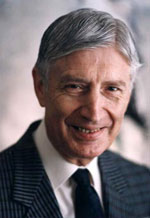
Dries van Agt (1931-2024), CDA party leader 1977-1982, justice minister 1971-1977, prime minister 1977-1982.
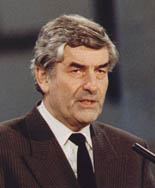
Ruud Lubbers (1939-2018), CDA party leader 1982-1994, economics minister 1973-1977,
parliamentary leader 1977-1982, prime minister 1982-1994, UN High Commissioner for Refugees 2001-2005.
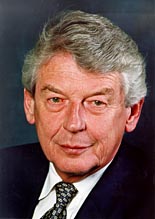
Wim Kok (1938-2018), PvdA party leader 1986-2002, finance minister 1989-1994, prime minister 1994-2002.
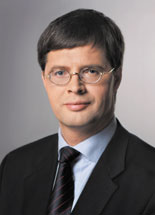
Jan Peter Balkenende (1956), CDA party leader 2001-2010, prime minister 2002-2010.
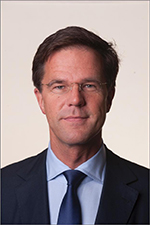
Mark Rutte (1967), VVD party leader 2006-2023, prime minister 2010-2024.

Dick Schoof (1957), prime minister 2024-present, partyless (PvdA member until 2021), senior civil servant
asked by Wilders to become prime minister of a right-wing government.
Dutch governments 1977 - present
| 1977 |
Van Agt I |
OUT |
IN |
IN |
- |
| 1978 |
| 1979 |
| 1980 |
| 1981 |
Van Agt II
Van Agt III (without PvdA) |
IN |
IN |
OUT |
D66* |
| 1982 |
Lubbers I |
OUT |
IN |
IN |
- |
| 1983 |
| 1984 |
| 1985 |
| 1986 |
Lubbers II |
OUT |
IN |
IN |
- |
| 1987 |
| 1988 |
| 1989 |
Lubbers III |
IN |
IN |
OUT |
- |
| 1990 |
| 1991 |
| 1992 |
| 1993 |
| 1994 |
Kok I
(Purple I) |
IN |
OUT |
IN |
D66 |
| 1995 |
| 1996 |
| 1997 |
| 1998 |
Kok II
(Purple II) |
IN |
OUT |
IN |
D66* |
| 1999 |
| 2000 |
| 2001 |
| 2002 |
Balkenende I |
OUT |
IN |
IN |
LPF |
| 2003 |
Balkenende II
Balkenende III (without D66) |
OUT |
IN |
IN |
D66 |
| 2004 |
| 2005 |
| 2006 |
Balkenende IV |
IN |
IN |
OUT |
CU |
| 2007 |
| 2008 |
| 2009 |
| 2010 |
Rutte I |
OUT |
IN |
IN |
[PVV] |
| 2011 |
| 2012 |
Rutte II |
IN |
OUT |
IN |
- |
| 2013 |
| 2014 |
| 2015 |
| 2016 |
| 2017 |
Rutte III |
OUT |
IN |
IN |
D66 + CU |
| 2018 |
| 2019 |
| 2020 |
| 2021 |
Rutte IV |
OUT |
IN |
IN |
D66 + CU |
| 2022 |
| 2023 |
| 2024 |
Schoof |
OUT |
[NSC]* |
IN |
PVV + BBB |
[NSC]*: I see Pieter Omtzigt’s NSC as essentially a replacement of the CDA. I hope they will merge once more.





